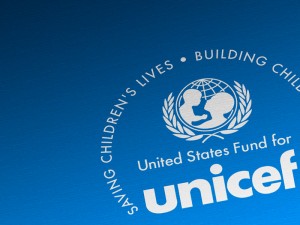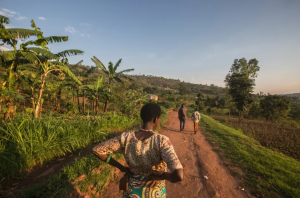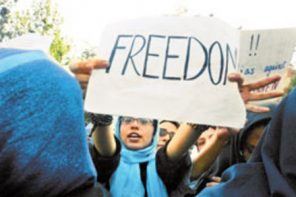 UNICEF today released a thorough report on female genital mutilation/cutting, which includes deep dives into data sets, methodology and social theory — there’s a whole section that considers what a “social norm” really is (a word so often just thrown around these kinds of reports), and then proceeds with an analysis about how they might be changed.
UNICEF today released a thorough report on female genital mutilation/cutting, which includes deep dives into data sets, methodology and social theory — there’s a whole section that considers what a “social norm” really is (a word so often just thrown around these kinds of reports), and then proceeds with an analysis about how they might be changed.
More than 125 million women and girls around the world have experienced FGM/C, most of them in the Middle East and Africa (and in diaspora communities with origins there). Lest you fall for the false appeal of linguistic coding, this is not a Muslim practice — 55 percent of girls who’ve been cut in Niger are Christian; only 2 percent are Muslim. It’s not a religious practice at all, in fact. But it is a practice with social power, and the UNICEF report includes a fascinating look at what people who live in these societies make of that power. Here’s some facts that might surprise you — and a few juxtapositions that should keep careful readers from assuming that one community feels the same as the next about the practice (or any other social rite, for that matter):
In Kenya, 59 percent of those cut do not see any benefit to the practice. But in the Gambia, 82 percent of those who’ve been cut think the practice should continue. In Uganda, 9 percent of women think the practice should continue — even though a scant 1 percent of Ugandan women and girls actually participate in the ritual. And in Mali, 58 percent of the women and girls who are cut are daughters of mothers who oppose the practice.
By and large, UNICEF found that the number of women supporting the practice is lower than the number of women who’ve been put through it, even in countries were prevalence is high. Education rates nearly universally influence support — in general, the more educated a woman, the less likely she is to support FGM/C.
And what do men think? In Chad, 27 percent of boys and men assume the practice is a religious requirement (it’s not). In Cameroon, meanwhile, 85 percent of men and boys support an end to the practice.
What about cross-gender conversation? It doesn’t much happen, UNICEF found. But that doesn’t mean couples agree on what to do with their kids. In Sierra Leone, 51 percent of couples don’t agree on whether the practice should continue. In Chad, 42 percent of couples disagree. In Cote d’Ivoire, 36 percent. Why does this matter? In Senegal and the Gambia, where more men than women support an end to FGM/C, a girl is more likely to escape cutting if her father is involved in the decision.
Obviously FGM/C attracts attention as a human rights issue. But it’s also a public health issue: In Yemen, 97 percent of the cuttings are done in the home, and 75 percent of them are performed with a blade or a razor. How’s that a health issue? I often hear people say that women who’ve undergone the rite report one blade may be shared among several women. And the risks of bleeding and complications are only too obvious. In Egypt, where the practice common, 77 percent of cuttings are done by doctors, raising interesting questions about the intersection of custom, ethics and modern medical practice.
The health consequences of FGM/C can also be severe. The cutting itself risks excessive bleeding and infections, but a cut woman’s life-long risk for urinary tract infections, difficult birth, sterility and cysts are also higher.
I would wager the report attracts some backlash, in part because of the specifics it investigates and makes public about how the rite is conducted. Exposing that level of knowledge — even though the rite itself is an open secret — is precisely what endangered Liberian journalist Mae Azango when I worked with her last year.
Azango was accused by some Liberians of, in her words, “selling out my culture to the West.” That’s not what she did, of course. But no doubt UNICEF’s report will trigger similar accusations. But the 143-report is a force to contend with, and no doubt it will go a long way to continuing the conversation around — “fight against,” in the activists’ version — FGM/C. With declarations by the UN, major bilateral aid groups and others earlier this year, that’s already a loud and raucous conversation.




